#published in poetry foundation’s nov issue
Text

what lesbian porn has done for me by Destiny O. Birdsong
#poem#poetry#lesbian poetry#lgbtq poetry#destiny o birdsong#lgbtq poet#i hadn’t seen this one posted on here yet#published in poetry foundation’s nov issue#words
6 notes
·
View notes
Text
On Nov. 1, Joshua Gutterman Tranen revealed that the Poetry Foundation had indefinitely shelved his review of Sam Sax's PIG. They did not want to be perceived as "taking sides" by publishing the work of an anti-Zionist Jewish critic writing on an anti-Zionist Jewish poet. This was relayed on Oct. 8, right on the cusp of Israel's escalated bombardment of Gaza. What is the function of criticism, if not to situate art in its broader context? And what context could be more pertinent for this work than the moment when anti-Zionist Jewish activists in the U.S. find themselves being arrested for opposing the genocide of Palestinians?
Immediately, writers expressed their disappointment with this act of censorship. The Foundation's tepid response failed to instill confidence. In a letter to the foundation, magazine contributor Lena Khalaf Tuffaha highlighted the hypocrisy of publishing June Jordan's words:
In times of crisis…Poetry Foundation uses these writers' work as pull quotes on the site. June Jordan comes to mind, a poem of whose is featured in the November issue of the magazine, entitled: “Intifada Incantation: Poem #8 for b.b.L.”…declares:
‘I SAID I LOVED YOU AND I WANTED
GENOCIDE TO STOP'
What might the good people of the Poetry Foundation imagine these lines to be about? Is June taking a side? Or is it that such clarity as hers can only be published after the fact, long after the writer and the event have passed?
“Long after the writer and the event have passed” succinctly points to a common tactic of delay, to which the Foundation is no stranger.
Summer Farah, the opening of her essay "More Than 2000 Poets Boycott The Poetry Foundation for Censoring Pro-Palestine Voices", published in Institute for Palestinian Studies, December 13, 2023. You can read the entire essay here
#summer farah#quotes#essays#words#found*#palestine#on poetry#lena khalaf tuffaha#june jordan#joshua gutterman tranen#sam sax#please always post that june jordan poem in full :)
5 notes
·
View notes
Audio
Gentle jazz filters in to where I sit perched up on the second ledge from the bottom. The Leubas must be near. Ah, yes, here they come, gently padding across the hardwood with their loving eyes scanning the many literary volumes and works of art spread throughout the room...
My, my, forgive me for my rudeness in not properly introducing myself...I am out of practice in this art as I mainly converse only with my fellow literary friends in the Leuba household. I am the Leuba’s (more on them later) 1855 volume of Putnam’s Monthly Magazine of American Literature, Science, and Art published in the Northern United States. Though I may not be of the same build as my grandfather, a monthly magazine as was the original format of Putnam’s Monthly (figures), I still contain all of the same pieces - just put together in an 1855 yearly volume. My pages are wrinkled, my coloring a fading tan and black. My weight, I dare to hesitantly reveal, is greater than that of the average novel...
Suddenly, but slowly and with a sure hand, I am being pulled from my resting spot on the second shelf. Ouch! Can you hear my spine cracking?

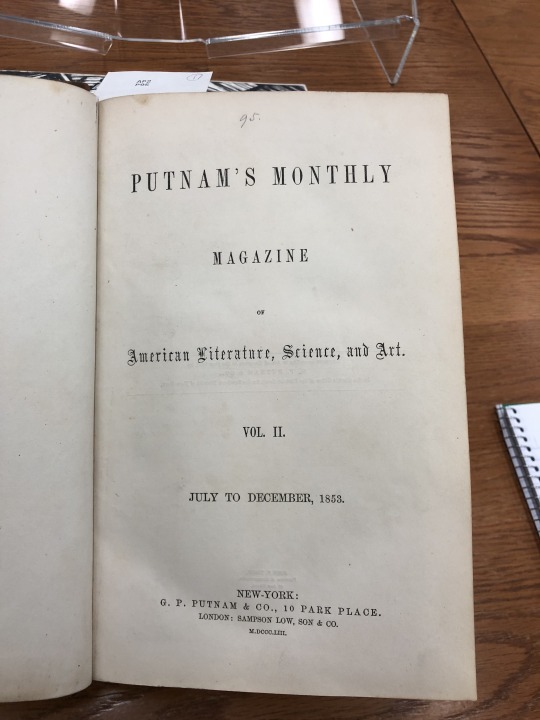
Again, I will have to ask for your forgiveness...My loyal companion two years my senior is pictured here instead of me (as I’m sure many of you will understand, it was a bad hair day). Although he contains material from the 1853 volume of Putnam’s Monthly, we are almost identical in form and layout!
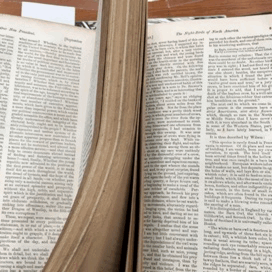
The stories contained within my pages, some true and some not, highlight American thought during the middle of the nineteenth century - a time in which tensions regarding matters of race and slavery ran high. Americans and foreigners alike were grappling with these issues which understandably gave way to a desire to make known their opinions to the greater public.
“Topics of national and general interest, or relating to the public welfare, will be discussed when there is occasion, with freedom...”
-Publisher’s note in Putnam’s Monthly
It is here where we finally arrive at our destination on my page 353. You, reader, have been waiting oh so patiently, for aren’t we ultimately setting out to contextualize “Benito Cereno?” This story, “Benito Cereno,” was written by Herman Melville and tells the tale of sea captain Amasa Delano and his encounter with a peculiar ship carrying white sailors and African slaves - with special focus put on the ship’s captain Benito Cereno and his enslaved African companion Babo. Even though the story finds its basis in the writings of the real captain Amasa Delano, it diverges from the true happenings as Melville changes the character of Delano and the narrator and weaves a story, providing much more description. Overall, in making this change, Melville is able to intentionally represent slaves as being intelligent, strategic, and real people (especially in the case of Babo). Therefore, it takes on an abolitionist viewpoint and allows readers to fully see the humanity of African slaves without having radical anti-slavery writings thrust at them.
Those coming across “Benito Cereno” would no doubt also have to be aware of the other articles contained in my volume. It is serialized in Putnam’s Monthly, not a stand alone work and as such, we can look to the articles surrounding it to perhaps glean more about what other writers and publishers of the time were thinking about slavery and race. As you peruse my pages, you will find poems attributed to Henry Wadsworth Longfellow, an ardent abolitionist, an article entitled “The Kansas Question,” and multiple other texts either directly or indirectly speaking on the question of slavery. There is a heavy emphasis on anti-slavery ideals, and even those writings not explicitly containing material about race or slavery can be applied to the emancipation cause if a reader was of that mindset.
Readers of Putnam’s Monthly would have received “Benito Cereno” as a way for Melville to subtly expose the status of slaves in a way that would further the abolitionist agenda without being an incendiary work that would cause a stir among the already divided states.
Remember the Leubas I referred to above? I told you we would come back to them! They, Walter and Martha, collect books, artwork, prints, letters, and other notable works from a multitude of remarkable figures. You know by now that I am a member of the extraordinary Leuba collection and contain many texts from writers holding anti-slavery opinions. But what about my other literary friends I spoke of earlier? What do their pages hold relating to matters of race and slavery, and what does this say about the Leubas?
The mark myself, as well as the others, proudly bear as parts of the Martha and Walter Leuba collection is pictured below.
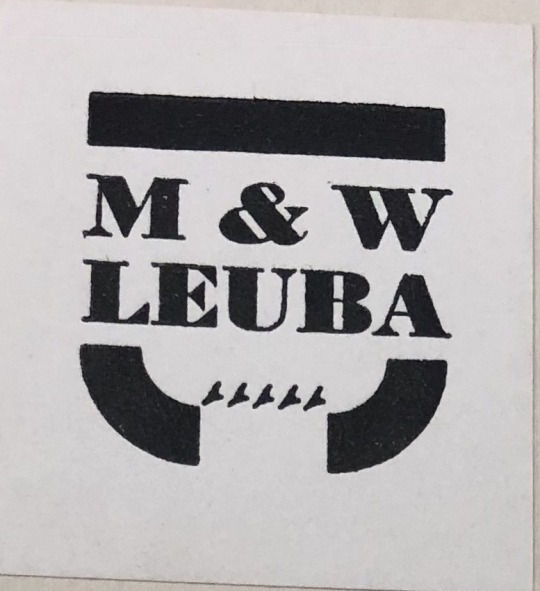
One good friend of mine is a copy of the Anti-Slavery Papers of James Russell Lowell volume I. He and his brother, volume II, comprise the set the Leubas own.

James Russell Lowell, as you can read more about in the two images below, was a writer who really became a part of the anti-slavery movement during the 1840′s. He penned many, many, poems, as well as articles, in defense of abolitionism and was the chief editorial writer for numerous anti-slavery / abolitionist newspapers, including the National Anti-Slavery Standard and the Pennsylvania Freeman. Even with his witty and slightly racy language, he managed to become a significant abolitionist.

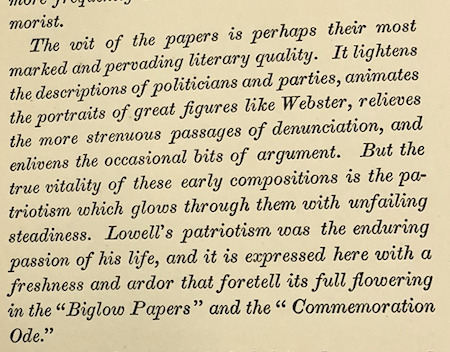
Yet another close friend of mine in the Leuba collection contains the personal writings of “Fanny” Kemble in what is considered the “closest, most detailed look at plantation slavery ever recorded by a white northern abolitionist” (PBS).

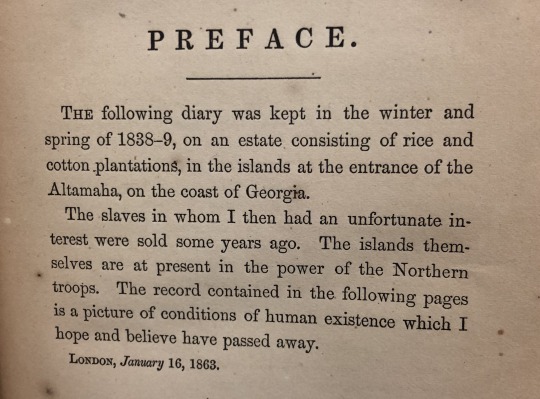
This journal was written during the time Fanny spent on the Georgian rice and cotton plantations actually owned by her husband, Pierce Butler. At the time of their marriage, she was not aware of his great dealings in the slave trade and ended up divorcing him after realizing he would never change his pro-slavery views.
Fanny’s writings as a whole show that she is so blatantly positioned in complete opposition of anything to do with slavery. She passionately exposes the inhumanity and horrors faced by the slaves and continued to stand firm in her abolitionist ways.
Though these are only two closer looks at fellow books in the Leuba collection, there are many more dealing with the same topics of race and slavery from the same perspective of being directly against them. My personal opinion, which I hope can now become yours as well, is that Martha and Walter greatly appreciate the efforts of abolitionist writers and their works during the 1800′s. Their aim is to preserve these books of significance for future generations. It can also be said that the Leubas would read my “Benito Cereno” pages and think about slavery through an abolitionist lens while understanding the African slaves truly were intelligent, worthy human beings.
Works Cited
-images were taken of books from the Special Collections room at Hillman Library
"Fanny Kemble and Pierce Butler." PBS Africans in America, WGBH, www.pbs.org/wgbh/aia/part4/
4p1569.html.
"James Russell Lowell." Poetry Foundation, www.poetryfoundation.org/poets/james-russell-lowell.
"Longfellow, Slavery and Abolition." National Park Service, 12 Jan. 2018, www.nps.gov/long/learn/
historyculture/longfellow-slavery-and-abolition.htm.
Melville, Herman. "Benito Cereno." Putnam's Monthly Magazine, vol. 6, 1855, pp. 353+.
"Putnam's Magazine." Wikipedia, 20 Jan. 2018, en.wikipedia.org/wiki/Putnam%27s_Magazine. Accessed 3
Nov. 2018.
"Walter and Martha Leuba Papers." ULS Digital Collections, digital.library.pitt.edu/collection/
walter-martha-leuba-papers. Accessed 2 Nov. 2018.
1 note
·
View note
Text
Makaha Surfside

Leialoha Perkins mit Shana Okuda – ©Gérard Koch, 2018

Makaha Surfside
In the agenda is the following entry: Mon 27.Nov. 2017-Leialoha Perkins, Makaha Surfside, Waianae, HI. – Yes, we need to get off the bus from our Honolulu hotel in time to arrive at Leialoha at 10.00. We stand at the bus station just opposite our hotel and wait for the express bus C, which goes over the country, out of the city. “Shana, I can already see our bus coming in behind the other guy who is just heading for our station.” I believed the seven dollars in the bus money for both of us out of my pocket and got ready to board the next bus. In one hand I held the film equipment backpack and with the other hand I pushed the dollars into the counting machine at the driver with my request to get two day tickets. In the back of the bus, which was already crowded with workers, there was just a seat in the bus for us two, where I grabbed the last window seat.
Although only 45km as the crow flies, the bus has to be tormented by the traffic from Honolulu and Pearl Harbor, as the busy coastal road along. The modern, glittering high-rise buildings of Honolulu slowly disappear behind us. We can be lucky that we have to go to the interview place city outward, because on the opposite lane of the highway towards the city, the cars are in four to seven lanes, miles in a sheet avalanche.
After a good hour’s drive, the express bus leaves the highway and drives through residential areas and business districts to Kapolei, to the large bus station in Haumea Str, which is just a long roadside. There we had to board the next bus, which was already ready.
At the last major intersection “Ewa-Schofield Junction” the express bus follows Highway 1 to “Honokai Hale” where the highway merges into a two-lane main road.
“We still have to get fresh lei’s,” Shana told me loudly in the not so quiet bus.
Arriving in Waianae, the big yellow, white bus stops at the “Tamura” shopping center, where we leave the swaying, noisy monster to go and buy the Lei’s. Here in Waianae, the original Hawaiians still live with their keen watch dogs and huge, self-erected trucks.
The contrasts from Waianae to Honolulu can not be greater, like poverty to wealth, but also from tourists. If you find in Waianae only tourists who have lost their way, the capital is overflowing with them.
With a fragrant white ginger flowers and a cornflower leis we leave the shopping center where we waited again for the next bus, which drives us to Makaha Surfside. There arrived in a few minutes, we get heavily laden and freezing the moving freezer.
Waiting for the green man at the traffic lights, we reached the destination, where we then reported to the security in the receiving container, which brought our arrival to Leialoha.
biography
Leialoha with Roland Francis Perkins – ©Gérard Koch, 2018
Leialoha Perkins is on
Born March 5, 1930 in Lahaina Maui, Hawai’ian Islands. She was the daughter of Samuel Umi and Margaret Malia (Kaa’a) Apo.
Leialoha loved the language and traveling. So she has traveled the whole world in an adventurous way in her life. In 1954 she married Stephen G. Mark, who unfortunately died in 1966. After a few years later, in 1971, she married Roland Francis Perkins, with whom she gave birth to two children, Mark ‘Umi Perkins and Kele Douglas Perkins. In addition to her terrific education and career, she has invested with Roland their time in the history of Kumulipos and conducted research. She has also written several books as an author.
The following training and career has been accomplished by Leialoha:
(in chronological order)
1957 Bachelor of Arts in englischer Literature cum laude, Boston University
1959 Master of Science in Library. Science, Simmons College
1966 Master of Arts in englischer Literature, Mount Holyoke College
1978 Doctor of Philosophy in Folklore and Folklife, University Pennsylvania
1959-1961 Catalogue library Museum Fine Arts, Boston
1965-1966 Smith College, Northampton
1966-1968 Instructor English Northeastern University, Boston
1973-1974 Library Boston Psychoanalytic Institute
1980-1986 Associate professor English and Anthropology Atenisi University,Nuku’alofa,Tonga,
1989-1994 Instructor Hawaiian studies University Hawaii-Leeward, Pearl City
1994-1999 Assistant professor Hawaiian studies University Hawaii-West Oahu
1994 Coordinator International Oral Traditions Program, Honolulu
2004 Co-founder Hui O Na Vahine Honua Earth Women’s Collaborative International
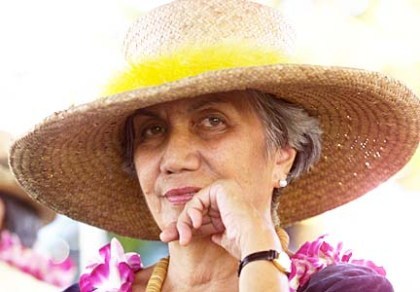
2001 Sept. 09,Tutu Leialoha Apo-Perkins at Yama Royale Ranch. photo by George F. Lee
Award:
Promotion Prize for the Initiation of the Journal HawnPac Folklore Folklife Studies, Hawai’i State Legislation, 1984-1986. Appointment to the first joint doctoral internship in Culture Learning Institute at the University of Pennsylvania in the East-West Center, 1974-1976, Excellence in Teaching Award 1994, Hawaii Award for Literature, Hawaii State Foundation Culture and Arts, 1998. Fellow for oral Tradition the Humanities, 1994.
HE Kumulipo
The Kumulipo is the Hawaiian Genesis consisting of 2,102 sentences in 16 “wā” (chapters) which was sung in honor of Prince Kalaninuiamamao of Big Island.
This story from the 18th century is the song that tells both the origin of the world and the genealogy of Hawai’i’s ruling family. The Kumulipo is a poetry with many nuances of meaning and puns, which also contains many subtle parables and parodies of rivals of the royal family. This mythology story was verbally passed on to Alapaiwahine. In 1889 King Kalākaua printed the Kumulipo for the first time in a 60 page brochure. He enclosed a two-sided paper showing the original Chant. Queen Liliʻuokalani described the singing as a prayer for the development of the universe and the descent of the Hawaiians. She, Lili’uokalani, translated the singing under house arrest in the Iolani Palace. This translation was published in 1897 and re-published in 1978 by Pueo Press.
It is very difficult to turn the Hawaiian wordplay and rhyme into English or German prose. Many scholars are still divided on the translation today.
In this fantastic conversation, we also learn from Leialoha Perkins what connects them to Bamburgh Castle in the english county of Northumberland. Also, we learn an ugly story about the Waimanalo Gulch Landfill.
youtube
to Video Subscription
epilogue
A terrible message has reached us from Oahu over the holidays of 2018. The wind of Kaneana Mountain has taken Leialoha Perkins with the birds and insects. She has passed the colorful rainbow into the land of souls and has closed her eyes on ……… forever.
Hawai’i loses with her one of the most important cultural people who has written so much about Hawaiian mythology and published books.
Her biggest wish in her life, though she was always afraid of the camera, was that she could tell in a recording about her cumulipo. You have to know that all Hawaiian Islands have their own Chant. Leialoha’s version, however, which she had explored with Roland, her husband, is the chant of the entire Hawaiian Islands.
This interview, which my wife Shana and I were allowed to do with Leialoha, was her life’s wish. Also, this conversation, not knowing, is the last conversation of Leialoha Perkins, a historical masterpiece that will be an important pillar of Hawaiian history.
Thank you Leialoha Perkins for getting to know you through my wife Shana. Listening to your stories was exciting and informative. Your humor, your stories and friendliness were unique. You will stay in my thoughts.
Aloha nui, Leihaloha Perkins.
Gallery:
Grandmother of Leialoha Perkins
Roland Francis Perkins with his son
Roland Francis Perkins with his son
Roland Francis Perkins with Leialoha Perkins; 27.Nov. 2017 Makaha Surfside ©Gérard Koch
Roland Francis Perkins with Leialoha Perkins; 27.Nov. 2017 Makaha Surfside ©Gérard Koch
Journal of Hawaiian and Pacific Folklore and Folklife Studies Vol.2 – 1991
Journal of Hawaiian and Pacific Folklore and Folklife Studies Vol.1
Cyclone Country – Jan 1, 1986 by Leialoha Apo Perkins
LOVE LETTERS: UNDER, OVER, AND DIAGONALLY – Von Leialoha Perkins & Karen Ann Watson-Gegeo
Natural, and other stories about contemporary Hawaiians Unknown Binding – 1979
Hawaiʻi Review Issue 27 Aloha ʻĀina: 1989
The Oxridge Woman Paperback – 1998 by Leialoha Apo Perkins
Other Places in the Turnings of a Mind – 1986 by Leialoha Apo Perkins
Leialoha Perkins mit Shana Okuda
Links:
Biography
Bamburgh Castle
Waimanalo Gulch Landfill
Work:
University Hawai’i Academia
Library
Book:
LOVE LETTERS: UNDER, OVER, AND DIAGONALLY
Cyclone Country – Jan 1, 1986
Other Places in the Turnings of a Mind – 1986
The Oxridge Woman – 1998
The firemakers and other short stories of Hawai’ì, the Sāmoas, and Tonga
Hawaiʻi Review Issue 27 Aloha ʻĀina: 1989
Natural, and other stories about contemporary Hawaiians Unknown Binding – 1979
Histories in Stone, Wood, Bone – 1998
Kumulipo Makaha Surfside Makaha Surfside In the agenda is the following entry: Mon 27.Nov. 2017-Leialoha Perkins, Makaha Surfside, Waianae, HI.
0 notes
Text
Social Media, Politics and “Howl”
Social media and politics- together, they have become a dangerous combination. In the world we live in today, they are a major component of our everyday culture. The trouble is, they have a bad reputation to do more harm than good. In fact, things have become so bad that:
“Boundaries have blurred between personal and professional lives, as well as between nations, through international networks that bring people together as never before. It is vital, therefore, that all who implement social media strategies for organisations, or use it for personal purposes, are aware of what the digital world offers in the community, the political sphere and the workplace” (Reiman).
One key component to both things is perspective, particularly politics. When it comes to politics, a perspective can be influenced through the candidate’s platform which is, “A manifesto of principles and policies that a candidate or party seeks to be elected upon. Although important, US political platforms tend to be less detailed and binding than the equivalent manifestos of European parties” (Tomson). In addition, having social media can also provide a platform for politicians.
However, there was a time when the culture was a little bit different. Picture yourself in America just after world war II. America in theory is on the upswing after winning the war in Europe and Japan. This perhaps would lead you to think that everything was good right? Not exactly. In the decade that followed the second world war, “Conformity was common, as young and old alike followed group norms rather than striking out on their own. Though men and women had been forced into new employment patterns during World War II, once the war was over, traditional roles were reaffirmed” (“The Culture of the 1950s”). There were some that were against the reoccurring culture of conformity and they became known as the Beat Generation. The overall motivation for the Beats was, “They fashioned a literature that was more bold, straightforward, and expressive than anything that had come before” (The Beat Generation) which was a conscious behavior on their part. The most controversial Beat was Allen Ginsberg who published Howlin which, “Ginsberg takes the reader/listener on a tour of the underside of America” (The Beat Generation). One such example is, “Who ate fire in paint hotels or drank turpentine in Paradise Alley, death, or purgatoried their torsos night after night” (Ginsberg). With “Howl”, “There is a visceral rage against the system that requires conformity and selling-out. Foul language and slang are common throughout the work, as well as drug use and criminality. All of these things were shocking to the 1950s establishment” (The Beat Generation).
Which brings me back to today. It was about a week and a half ago I wrote a creative manifesto after reading Ginsberg’s “Howl” and when he called out America’s culture at that time, I decided to follow suit:
America; Land of the free home of the brave,
Oh, really?
In a world where tension is at an all-time high?
Where politics and media of all platforms control shape our perspectives?
The world we live in today is not what we want.
That is just the first few stanzas and when I was writing this, it made me think about songs that are politically influenced such as “American Idiot” by Green Day or “B.Y.O.B” by System of a Down and I do reference those in the work:
In a world where, “Television dreams of tomorrow” (Armstrong, et al.),
It’s a government system where to quote System of a Down, “You depend on our protection, yet you feed us lies from the table cloth” (Malakian and Tankian).
You see, things started to significantly turn after, “May 2, 2011, U.S. Special Forces raided an al-Qaeda compound in Abbottabad, Pakistan, and killed the world’s most wanted terrorist: Osama bin Laden” (Marks). That is actually referenced in the manifesto:
Once the head was cut off the snake,
it seemed that only one thing was left: ourselves
For instance, “When we killed it all The hate was all we had” (Slipknot).
Ever since then it’s been nothing but political tension.
Like Ginsberg calling out America’s culture going to back to the, “Visceral rage against the system that requires conformity and selling-out” (The Beat Generation), the manifesto is calling out the trends/actions that both politics and social media have committed. However, there is some good news when it comes to social media and politics. One such example is an article recently published by CNN in which, “Facebook and Twitter are reviewing and taking down posts that spread disinformation about how and when to vote on Election Day” (Collier) and, “Ahead of last year's midterm elections, Facebook and Twitter declared such posts against their policies and created methods for states to flag election-related misinformation for removal” (Collier) but, that’s not all. Recently, “Twitter (TWTR) will stop accepting political ads, the company's CEO, Jack Dorsey, announced Wednesday” (O'Sullivan and Fung).
Politics and not just social media but mass media in general have come a long way and that is due particularly due to technological advancement. In fact, “Advancement in technology had a profound impact on the practice of statecraft” (P.R. 146) and so much so that, “It is technologies of social connection which has direct influence on international relations in the twenty-first century. In the age of globalisation and Internet, top-down alleyway communications have almost become meaningless” (P.R. 146) and it doesn’t stop there. As a result of the evolution, “Politicians are constantly seeking alternatives to social media as a dominant form of communicating to the public” (Owen). With this comes with what lies ahead and, “Great uncertainly surrounds the future of political communication” (Owen). However, there is some hope for these trends to provide some insight. One benefit includes, “Issues and events that might be outside the purview of mainstream journalists can be brought to prominence by ordinary citizens” (Owen). Social Media and politics seem to bring nothing but negativity especially lately but hopefully actions performed by companies such as Twitter and other events such as gaining insight from the news will keep the good of media intact.
Works Cited
Armstrong, Billie J., et al. "Green Day American Idiot." Genius, 21 Sept. 2004, genius.com/Green-day-american-idiot-lyrics. Collier, Kevin. "Social Media Companies Remove Posts Spreading Disinformation About Election Day." CNN, 6 Nov. 2019, www.cnn.com/2019/11/05/politics/social-media-companies-disinformation-election-day/.
Ginsberg, Allen. "Howl by Allen Ginsberg." Poetry Foundation, www.poetryfoundation.org/poems/49303/howl.
Malakian, Daron, and Serj Tankian. "System of a Down B.Y.O.B." Genius, 17 May 2005, genius.com/System-of-a-down-byob-lyrics.
Reiman, Cornelis. "social media growth and global change." Public Interest and Private Rights in Social Media, PDF File, 2012, p. 36. Marks, Julie. "How SEAL Team Six Took Out Osama Bin Laden." HISTORY, 24 May 2018, www.history.com/news/osama-bin-laden-death-seal-team-six.
O'Sullivan, Donie, and Brian Fung,. "Twitter Will Ban Political Ads, Jack Dorsey Announces." CNN, 31 Oct. 2019, www.cnn.com/2019/10/30/tech/twitter-political-ads-2020-election/index.html.
Owen, Diana. "The Past Decade and Future of Political Media: The Ascendance of Social Media." OpenMind, 2019, www.bbvaopenmind.com/en/articles/the-past-decade-and-future-of-political-media-the-ascendance-of-social-media/.
P. R., Biju. "Internet Diplomacy." Political Internet State and Politics in the Age of Social Media, 2016, p. 146, www.taylorfrancis.com/books/9781315389929.
Slipknot. "Slipknot Psychosocial." Genius, 20 Aug. 2008, genius.com/Slipknot-psychosocial-lyrics.
"The Beat Generation." The Literature Network, www.online-literature.com/periods/beat.php.
"The Culture of the 1950s." American History from Revolution to Reconstruction and Beyond, 1994, www.let.rug.nl/usa/outlines/history-1994/postwar-america/the-culture-of-the-1950s.php.
Tomson, Alex. A Glossary of US Politics and Government. online read, Edinburgh University Press, 2007, p. 136.
0 notes
Text
Poet Cynthia Dewi Oka visited Widener on Nov. 12 through 14 as a part of the English and Creative Writing Department’s Distinguished Writers Series.
Oka, a three-time Pushcart Prize Nominee, published her debut collection of poetry with Dinah Press called Nomad of Salt and Hard Water in December 2012, celebrating journey and its relentless precision of language. A second edition with new and revised poems was published in April 2016 with Thread Makes Blanket Press.
Much of her poetry has been published online and in print in such places as The American Poetry Review, Guernica Magazine, and Apogee Journal. In addition, Oka is a contributor for anthologies such as Women of Resistance: Poems for a New Feminism and Who Will Speak for America among others. She has also been awarded the Fifth Wednesday Journal Editor’s Prize in Poetry as well as the Leeway Foundation Transformation Award and is currently pursuing her master’s in fine arts as a Holden Fellow at Warren Wilson College.
Oka’s latest collection is titled Salvage: Poems. Published in December 2017 with Northwestern University Press, Salvage interrogates what it means to reach for our humanity through the guise of nation, race, and gender.
On campus, Oka was the feature speaker at the Honors Freshman Composition Forum. She also met with several students within the department for tutorials and visited numerous creative writing courses. For many students, Oka’s visit was transformational and eye-opening.
Rohan Suriyage, a senior English and communications studies double major, found Oka’s presence and communication to be like that of a friend. Suriyage, along with several students in the Creative Writing department that received tutorials with Oka, believes he gained so much incredible insight from the visiting writer in such a short amount of time.
“Her prowess for effective writing, aesthetic, and finding a writer’s voice is truly incredible,” Suriyage said. “I’ve rethought the way I approach my writing, for the better, of course, and I thank her.”
Oka concluded her visit with a public reading during which she read new, never before published work surrounding Indonesian history and culture, specifically the mass killings that took place in the 1960s which the Indonesian government and citizens now act as if did not happen. She utilized documents once deemed to hold classified information on the killings to formulate a narrative, bringing to light the tragedy of what happened as well as the integration of Indonesian culture. After the reading, Oka took time to answer questions regarding politics and poetry, sign copies of her book, and speak to students.
Domenic Gaeta, senior Anthropology major, found Oka’s new poetry on the tragic killings in Indonesia to be powerful, rich in detail, and attention grabbing.
“I would have never though to use classified documents as the general vocabulary makeup of a poem, nor would I think to write about such tragic events,” Gaeta said. “Still, I knew each time she was telling a story that needed to be told.”
Oka also sat down with me for an interview with The Blue Route during her interview. The full conversation will be featured in our 21st issue set to be published in the next couple of weeks. For a preview of the interview, read below!
I was reading some of the reviews on Salvage and some of the descriptions were that it is almost as if you have “one foot in time, the other in timelessness”, that the poems exhibit “mythical depth, civic outcry, and lyric inventiveness”, and that the collection is almost as if “entering a dream world”. This is what other people have said about your work. I’m curious as to how you view this collection and what your vision was in building it.
Every project I’m working on is an effort to grow and transform. That is the superpower of creative writers. We get to remake ourselves. For me, Salvage is an enactment in life, it was happening parallel with life. What was happening on the page was an attempt to sort of recuperate, to integrate a lot of the worst things that I’ve seen or have been through.
My first book, Nomad of Salt and Hard Water, was really an affirmation of strategies of survival. Part of the process of surviving difficult or traumatic things in our lives is that we end up having to bury a lot, so you can keep moving. Salvage was an effort to actually unearth those things and to bring them back into conversation, to reintegrate them, to repurpose them, to make them useful again.
I think of the structure of the book like an onion where you’re looking at the most external forms of violence, war, displacement, gentrification. Then you move inwards to the family, the legacies, and the exchanges that happen in that space. The final layer is intimacy, relationships. That was the vision. It is a trajectory moving inward.
I find that if I’m writing something from a darker place or something that is slightly out of my comfort zone, a little less like me, it takes me a bit to get into that headspace. Are there any poems in Salvage where you had to remove yourself and get into another headspace? How did you get there and then how do you shake it off?
For me, it feels less like going somewhere else and more like being your whole, true self at a given period of time. I give space for all that I am, everything I shut out to arrive when I’m writing.
I tend to be one of those people where, if I finish something, I’m like, “Okay, on to the next thing!” Salvage really taught me that I can’t just do that. A rest period is important. For example, when I finish working on a poem, I can’t necessarily switch out of it. There has to be a transition period where I’m slowly moving back into the pace of my daily life and I think it’s good to plan for that rather than feel cut-off. This is why I stress it is so important to have a writing practice, because then we learn what our tendencies are and what is optimal for us in how we take care of ourselves after we finish. It’s labor, so much labor when we write, and we need sustenance after it. If you’re an extrovert, your sustenance might be from surrounding yourself with people, whereas introverts need alone time. We have to build that into our writing practice so that we don’t become—at least for me—so that I don’t become a terrible person to the people that I love.
This slideshow requires JavaScript.
by Carlie Sisco
Poet Cynthia Dewi Oka offers insight on creative vision and the labor of writing. Check out this preview of an interview with Oka soon to be published in Issue 21! Poet Cynthia Dewi Oka visited Widener on Nov. 12 through 14 as a part of the English and Creative Writing Department’s Distinguished Writers Series.
#Advice#Books#Creative writing#cynthia dewi oka#Poetry#short stories#Storytelling#Undergraduate literary journal#Undergraduate Writing#Writing
0 notes